IRF
IRF Uppsala
RPF programme
IRF-U Staff
Seminars
Courses
PhD studies
Examensarbete
Workshops
Cluster
...EFW
...Quicklook
Cassini
Rosetta
Solar Orbiter
Intranet
| INSTITUTET FÖR RYMDFYSIK | UPPSALA |
 |
|
| Swedish Institute of Space Physics | (59°50.272′N, 17°38.786′E) |



EISCAT_3D User
Meeting 2015
A 7th user meeting for
the EISCAT_3D project takes place in Uppsala, Sweden, on May 6-7, 2015. The general
objetive of the user meetings is planning for the Science of the
EISCAT_3D project.
Programme
The start of the meeting is at 1.30 pm on Wednesday, May 6, the end at 12.30 pm on Thursday, May 7. Please contact anyone of the programme committee, Ingrid Mann, Anita Aikio, Ian McCrea, Yasunobu Ogawa, Cesar La Hoz, Thomas Leyser, or Craig Heinselman, for suggestions about the meeting programme. This years special topic is tentatively "Connections of EISCAT_3D with other research infrastructures and project initiatives"
The preliminary programme (last updated 2015-05-04) is
- May 6, Wednesday,
13.30-17.00:
Special Topic : Connections of EISCAT_3D with other research infrastructures and project initiatives - Location: Room 12167 of the Ångström Laboratory
- 13.30-13.35: Practical Information, Stephan Buchert
- 13.35-13.45: Opening and Welcome, Craig Heinselmann
- 13.45-14.15: EISCAT_3D status in Finnland, Japan, Norway, Sweden, UK, Anita Aikio, Yasunobu Ogawa, Cesar La Hoz, Stephan Buchert, Ian McCrea
- 14.15-14.35: EISCAT_3D in the European Landscape of Research Projects and Infrastructures, Ingrid Mann
- 14.35-14.55: EISCAT_3D metadata: requirements for finding volumetric radar data and simultaneous complementary data from other research infrastructures, Carl-Fredrik Enell
- 14.55-15.25: Break
- 15.25-15.45: The ISR roadmap in the COOPEUS project, Anders
Tjulin
- 15.45-16.05: System design and evaluation of EISCAT_3D Tx module, Yasunobu Ogawa
- 16.05-16.25: Latest ideas for a heater for E3D, Mike Rietveld
- 16.25-16.45: Measurement Methods Handbook, Markku Lehtinen
- 16.45-17.05: Groundbased optical instruments: current status
and future possibilities for EISCAT_3D, Urban Brändström
- 17.05-17.25: Evaluation of the EISCAT radar for SSA purposes, Matteo Crimella
- May 7, Thursday, 9.00-12.30:
Special topic continued, EISCAT_3D in national programmes, general EISCAT and EISCAT_3D Science: New results and future plans. - Location: Room 80109 of the Ångström Laboratory
- 09.00-09.20: ARISE and DYNACLIM EU projects and their connection to EISCAT_3D, Evgenia Belova
- 09.20-09.40: TomoScand ionospheric tomography with EISCAT dynasonde measurements and EISCAT UHF validation, Johannes Norberg
- 09.40-10.00: X-mode ionosphere heating effect in the F-region, Tima Sergienko
- 10.00-10.20: The EASI synthetic aperture system at the ESR, Nicola Schlatter
- 10.20-10.50: Break
- 10.50-11.10: Impacts of the pulsating aurora on the atmosphere, Shin-ichiro Oyama
- 11.10-11.30: Results from the Swarm mission, Stephan Buchert
- 11.30-11.50: MMS, Yuri Khotyaintsev, TBC
- 11.50-12.20: Final discussions, AOB
Registration
The local organizer is Stephan Buchert. Registration
opened in February, 2014. A deadline
has been set to April 24, 2015 (but if you missed it, please
write me anyway)! Registration can be done by
email to scb@irfu.se. Please let me know if you would like
to have assistance for reserving accommodation.
Practical Information The workshop will take place in the Ångströmlaboratoriet of the Uppsala University, starting on Wednesday, May 6, after lunch, and ending on Thursday, May 7, lunch time. The meeting room on Wednesday is (preliminary) 12167 and on Thursday 80109. If needed, smaller meeting rooms for splinter sessions are available, also for Thursday afternoon and Wednesday morning
Map
Accommodation in Uppsala is often difficult to find for the time of the workshop, we recomment that you book as soon as possible:
Accommodation in Uppsala is often difficult to find for the time of the workshop, we recomment that you book as soon as possible:
EISCAT-3D, a short
description
More information can be found at the EISCAT-3D web site.
EISCAT-3D is a planned next generation incoherent scatter radar facility, based on phased-array technology and multiple radar sites. The EISCAT_3D proposal was accepted on the ESFRI Roadmap of large-scale European research infrastructures in December 2008.
More information can be found at the EISCAT-3D web site.
EISCAT-3D is a planned next generation incoherent scatter radar facility, based on phased-array technology and multiple radar sites. The EISCAT_3D proposal was accepted on the ESFRI Roadmap of large-scale European research infrastructures in December 2008.
The
EU, EISCAT, the Rutherford-Appleton
Laboratory (STFC,
UK), the University
of Tromsø (Norway), the Luleå
Technical University (Sweden), and the Swedish Institute of Space Physics
(Sweden) financed and undertook the EISCAT-3D design
study. The results of the study were presented at the first
EISCAT
-3D User Meeting 2009, and a final
report has been published.
A four
year long Preparatory
Phase of EISCAT_3D funded by the European Commission
under the call FP7-INFRASTRUCTURES-2010-1 started on 1
October 2010. The Preparatory Phase work has been performed by a
consortium consisting of
EISCAT Scientific Association
University of Oulu, Finland
Luleå University of Technology, Sweden
Swedish Institute of Space Physics, Sweden
University of Tromsø, Norway
Science and Technology Facilities Council, UK
Swedish Research Council, Sweden
National Instruments, Belgium
with EISCAT acting as coordinator. Ongoing Preparatory Phase actions were presented at User Meetings in 2011, 2012, 2013, and 2014. A prominent outcome is the Science Case for a EISCAT-3D facility which had been prepared within work package 3, Science planning and user engagement. The Preparatory Phase ended in September 2014. In January 2015 EISCAT has submitted a project proposal, “EISCAT_3D: Preparation for Production” (EISCAT3D_PfP) in response to the European Commissions call INFRADEV-3-2015: Individual implementation and operation of ESFRI projects.
In Norway and Sweden user consortia consisting of 30-40 active researchers submitted applications for national funding of E3D as a research infrastructure, applying for 150 MNOK and 150 MSEK, respectively. The submissions were in 2014 and 2013, respectively.